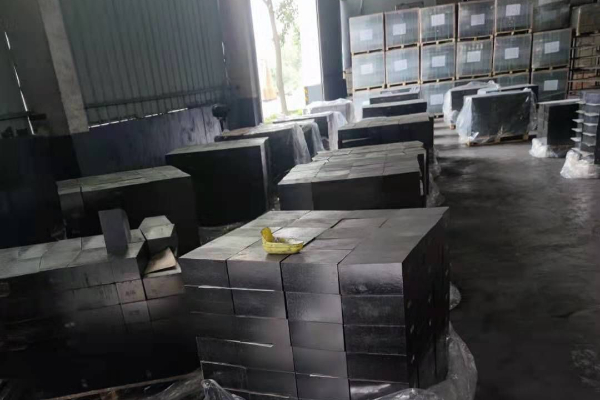Кирпич магнезиально-углеродистый огнеупорный представляет собой щелочной огнеупорный материал, изготовленный из магнезии и графита в качестве сырья и с использованием различных связующих веществ.. В качестве важного компонента магнезиально-углеродистых огнеупорных материалов., graphite content has a crucial impact on the performance of magnesium-carbon refractory materials. Due to the high thermal conductivity of graphite, low thermal expansion coefficient, and non-wetting between graphite and slag.
Application of magnesia carbon refractory bricks

Magnesia-carbon bricks are very important refractory materials. Magnesia-carbon bricks are used in many kilns, such as the linings of various electric arc furnaces, ковши, and steelmaking refining furnaces (BOF, RH).
Direct oxidation and indirect oxidation of graphite

Adding graphite greatly improves the thermal shock resistance and slag erosion resistance of magnesium carbon refractory materials. Однако, graphite is easily oxidized, which increases the pores of magnesia carbon bricks and also leads to a reduction in strength and corrosion resistance, as well as material peeling and structural damage. Поэтому, the research on the oxidation resistance of magnesium carbon refractory materials has very important practical significance.
Graphite oxidation can be divided into direct oxidation and indirect oxidation. Direct oxidation mainly refers to the reaction between graphite and oxygen; while indirect oxidation mainly refers to the reaction of graphite and magnesium oxide at high temperatures. It is generally believed that when the temperature is lower than 1400°C, direct oxidation mainly occurs; when the temperature is higher than 1400°C, indirect oxidation plays a major role.
Effect of graphite content on magnesia carbon bricks

After testing by Rongsheng Refractory Materials Company, it was found that the graphite content has the following effects on magnesia carbon bricks:
- The volume density of magnesia carbon bricks decreases with the increase of graphite content, and the porosity increases with the increase of graphite content. After carbonization at 900°C, the volume density of the magnesia carbon brick sample decreased, while the porosity increased significantly.
- The higher the graphite content in the magnesia carbon brick sample, the thinner the thickness of the decarburization layer, and the lower the graphite oxidation rate. В то же время, the decarburization layer thickness and graphite oxidation rate of magnesia carbon bricks oxidized at 1400°C are lower than those of magnesia carbon bricks oxidized at 1000°C.
- The oxidation rate of the magnesia-carbon brick sample was calculated using the oxidation model, its changing trend with the graphite content is relatively consistent with the actual measured change trend of the decarburized layer thickness. That is, the oxidation rate decreases with the increase of graphite content, and the decrease is most obvious when the graphite content is low.
 Группа Жуншэн
Группа Жуншэн

Вичат
Сканируйте QR-код с помощью WeChat